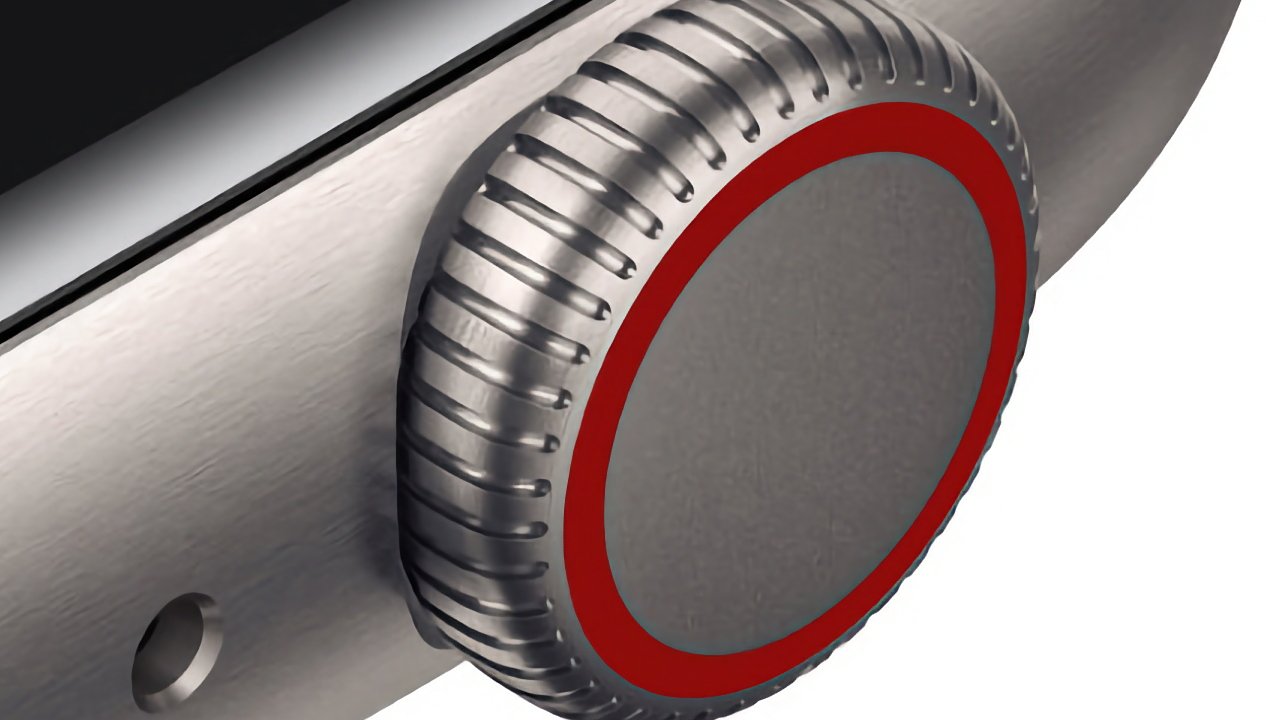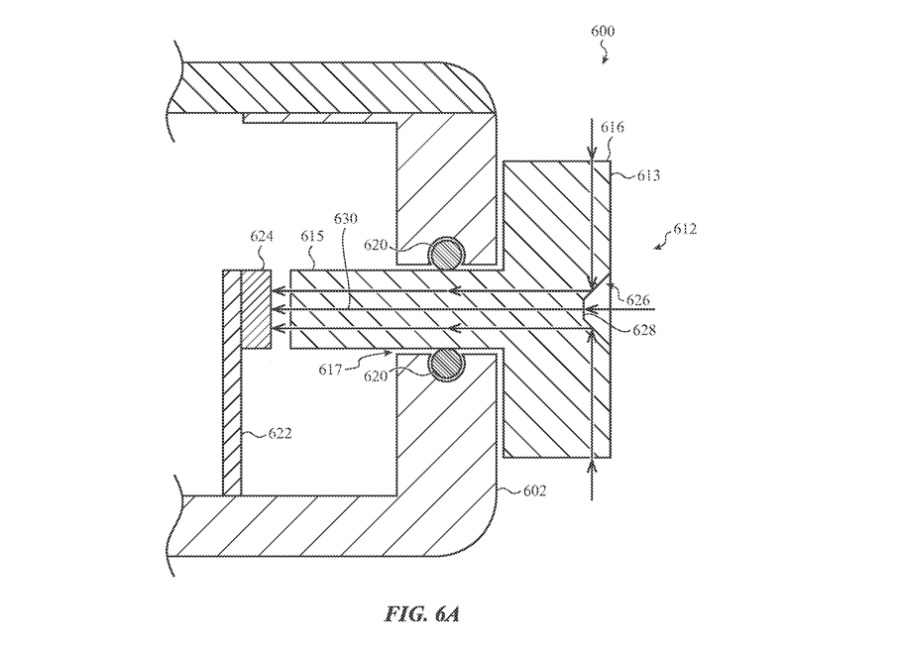Apple continues to work on maximizing the benefits and capabilities of the Apple Watch‘s Digital Crown, with research surfacing regarding how the physical rotation could be supplemented or replaced by sensors that detect light or touch.
Following its recent patent application for entirely replacing the Digital Crown with a touch-sensitive surface, Apple is also investigating an alternative option. Future Apple Watches may retain a physical crown but add a light-sensitive surface on and around it.
“[A] crown extending from the side of the housing… [would] and defining an imaging surface,” says Apple in “Crown for An Electronic Watch,” a newly-granted patent.
“The crown may include a light-directing feature configured to direct, onto the image-sensing element, an image of an object in contact with the imaging surface,” it continues.
Future Digital Crowns may not feature the free rotation that the current one does, and instead be “rotationally constrained” so that they can only rotate through one turn.
“For example, users may interact with a crown by rotating the crown or, in the case of a crown that is rotationally constrained, sliding a finger over a surface of the crown,” continues the patent. “In order to sense the motion of the user’s finger, a crown as described herein may include a window on the part of the crown that the user touches when interacting with the crown.”
The aim is to let the crown act as if it is freely rotating and do so by registering the user’s finger motion and speed. It may do that by detecting skin, by taking an image of the user’s finger, or by detecting light variations.
If the watch takes images through the Digital Crown, then the patent says it’s the difference between multiple frames that gets analyzed. It’s not, for instance, a Touch ID-like situation where the user’s biometric data is used to determine whether rotation is allowed or not.
“In order to detect motion using the image (e.g., the stored image), the image sensor may analyze multiple frames to determine, for example, a speed and direction of one or more features in the image,” says the patent. “The features that are analyzed may include features of a user’s skin (e.g., fingerprints, hair follicles), or any other optically detectable feature, texture, surface irregularity, image, or the like, of any object. In this way, the device may be responsive to skin (e.g., the skin of a user’s finger or hand), a stylus, a gloved finger…”
The patent also describes in detail how a Digital Crown could have a sensor that detects light and passes data to the rest of the Watch.
“The crown may include a light-transmissive member defining an angled surface configured to direct light from the imaging surface to the image-sensing element,” it says. “The angled surface may have an angle configured to produce total internal reflection of the light. The wearable electronic device may further include a reflective material applied to the angled surface.”
Placing a finger on the rim of the physical Digital Crown, and rotating it, could alter the light levels detected within the Watch. That would depend on ambient light conditions — unless the Watch itself produced light.
“The light-transmissive member may at least partially define a head of the crown and a shaft of the crown,” says the patent. “The wearable electronic device may further include a light source at least partially within the housing and configured to illuminate the object.”
Drawings in the patent detail methods by which light information from the Crown could be passed into the Watch itself.
Much of the description in this patent application details what might be presumed to be the same for the existing Digital Crown in the existing Apple Watch. It shows how rotation of the Crown can be passed along a shaft and this hardware movement be translated into instructions for the display to react.
It’s possible that a Digital Crown using the methods in this application may be more precise than the current system. Such methods may make the physical crown less susceptible to the wear that it would get from a mechanical system.
Alternatively, it may be that this method would allow for the shaft of the Digital Crown to be shorter than at present. That would give Apple more room within the Watch for other components.
Since this patent was applied for, Apple has released another device with a Digital Crown. While this patent solely refers to a watch, the benefits of precision and taking up less room would equally be useful for the Apple Vision Pro.
The application is credited to one Apple inventor, Michael J. Beyhs. He has no specifically related patents, but his LinkedIn profile says that he works as a hardware engineer in Touch and Sensing Incubation for Apple in Germany.
This story originally appeared on Appleinsider


